
Clean energy employs more people than fossil fuel sectors: IEA report
The report finds that the number of energy jobs worldwide has recovered from disruptions due to COVID, increasing to above its pre-pandemic level of more than 65 million people, or around 2% of the total labour force

Clean energy industries now employ more people globally than fossil fuel sectors, according to the first edition of the World Energy Employment Report published by the International Energy Agency (IEA).
The report finds that the number of energy jobs worldwide has recovered from disruptions due to COVID-19, increasing to above its pre-pandemic level of more than 65 million people, or around 2% of the total labour force. These jobs are roughly equally distributed across fuel supply (21 million), in the power sector (20 million), and in end uses (24 million) such as energy efficiency and vehicle manufacturing.
The growth has been driven by hiring in clean energy sectors, while the oil and gas sector saw some of the largest declines in employment at the start of the pandemic and has yet to fully recover, even with a spur of recent projects for new liquefied natural gas (LNG) projects, says the report.
Also read: Samsung sets goal to attain 100% clean energy by 2050
‘Fastest employment growth’
With the recent rebound, clean energy surpassed the 50% mark for its share of total energy employment, with nearly two-thirds of workers involved in building new projects and manufacturing clean energy technologies.
At the same time, the oil and gas sector is also experiencing an upswing in employment, with new projects under development, notably new liquefied natural gas (LNG) infrastructure.
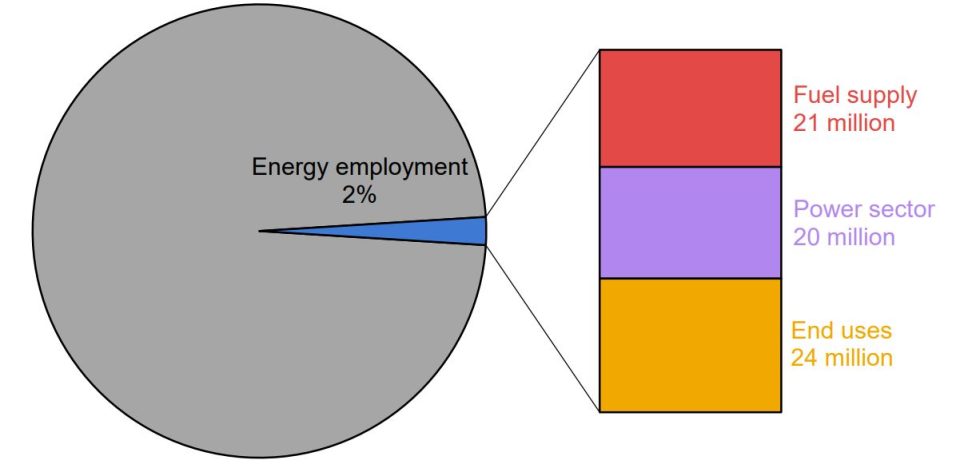
“The energy sector is set to see its fastest employment growth in recent years in 2022, however, high input costs and inflationary pressures are adding to hiring and supply chain challenges already present in some regions and subsectors, such as solar, wind, oil, and gas… Around 45% of the world’s energy workers are in high-skilled occupations, compared with about 25% for the wider economy. Less than 10% of energy employment is in low-skilled labour, and is concentrated in EMDEs (emerging markets and developing economies), although may be missing many informal workers in those regions,” the report said.
Also read: $70 bn investment will turn India to clean energy exporter: Gautam Adani
Policy responses to the pandemic and Russia’s invasion of Ukraine, including the US Inflation Reduction Act, will continue to add to new hiring demand and to shifting the status quo of global energy supply chains.
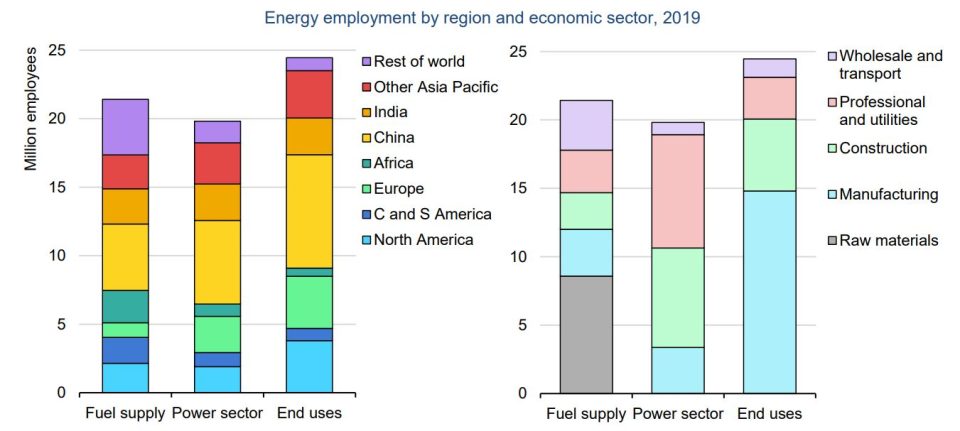
Energy jobs counted in the report span the value chain, with around a third of workers in energy fuel supply (coal, oil, gas and bioenergy), a third in the power sector (generation, transmission, distribution and storage), and a third in key energy end uses (vehicle manufacturing and energy efficiency).
China’s domination
According to the report, more than half of energy employment is in the Asia-Pacific region. This reflects rapidly expanding energy infrastructure in the region and access to lower-cost labour that has enabled the emergence of manufacturing hubs that serve both local and export markets, notably for solar, electric vehicles and batteries. China alone accounts for 30% of the global energy workforce.
Also read: South Korea and Saudi Arabia need oil but eye clean energy
In all IEA scenarios, clean energy employment is set to grow, outweighing declines in fossil fuel jobs. In the Net Zero Emissions by 2050 Scenario, 14 million new clean energy jobs are created by 2030, while another 16 million workers switch to new roles related to clean energy, said the report.
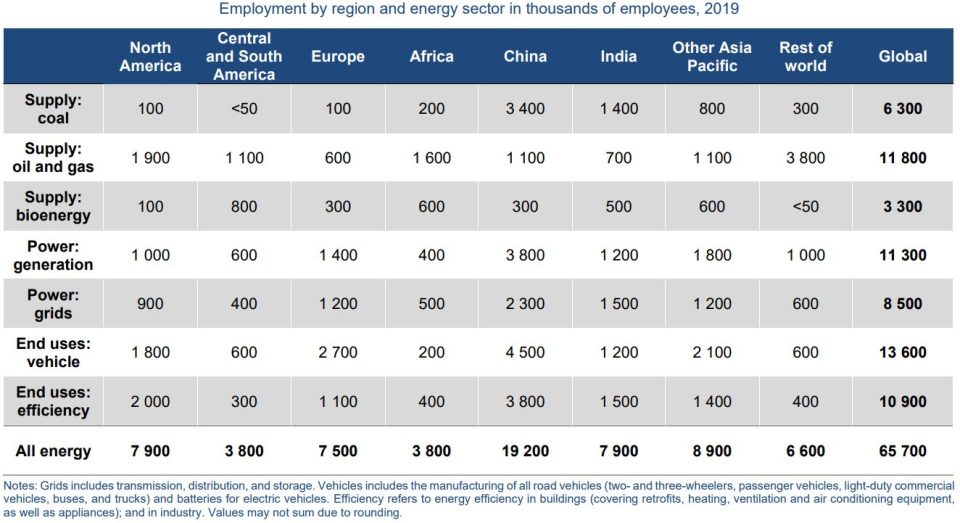
“Countries around the world are responding to the current crisis by seeking to accelerate the growth of homegrown clean energy industries. The regions that make this move will see huge growth in jobs,” said IEA Executive Director Fatih Birol.
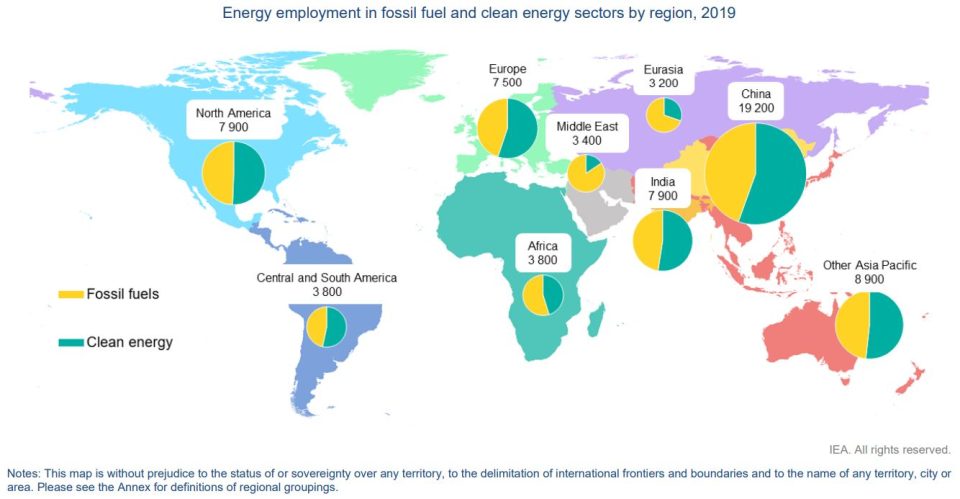
“Seizing this opportunity requires skilled workers. Governments, companies, labour representatives and educators must come together to develop the programmes and accreditations needed to cultivate this workforce and ensure the jobs created are quality jobs that can attract a diverse workforce,” Birol added.
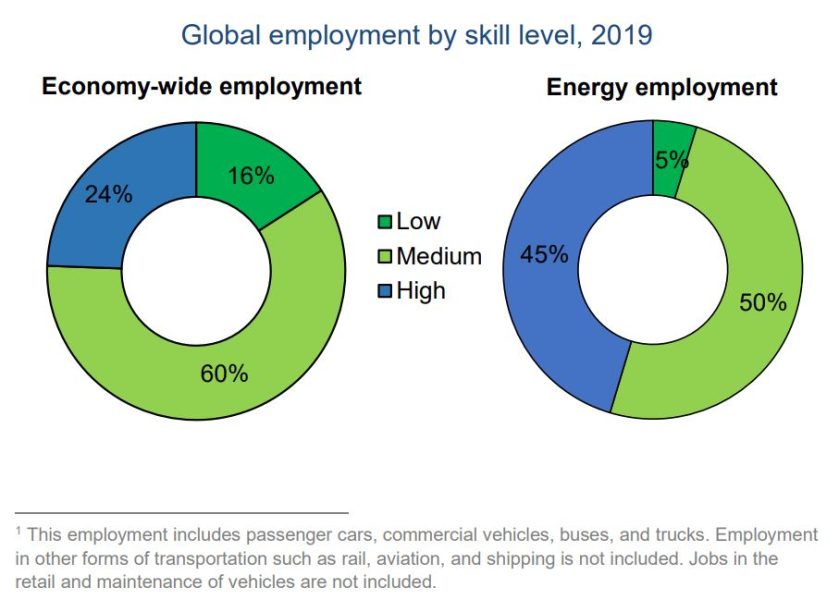
The report said that energy investment is set to pick up by 8% in 2022, reaching $2.4 trillion, but almost half of the increase in capital spending is linked to higher costs. Total energy demand also climbed higher than pre-pandemic levels in 2021, with increased production driving a greater need for workers.
Also read: US senator introduces legislation to strengthen India-US cooperation in clean energy


